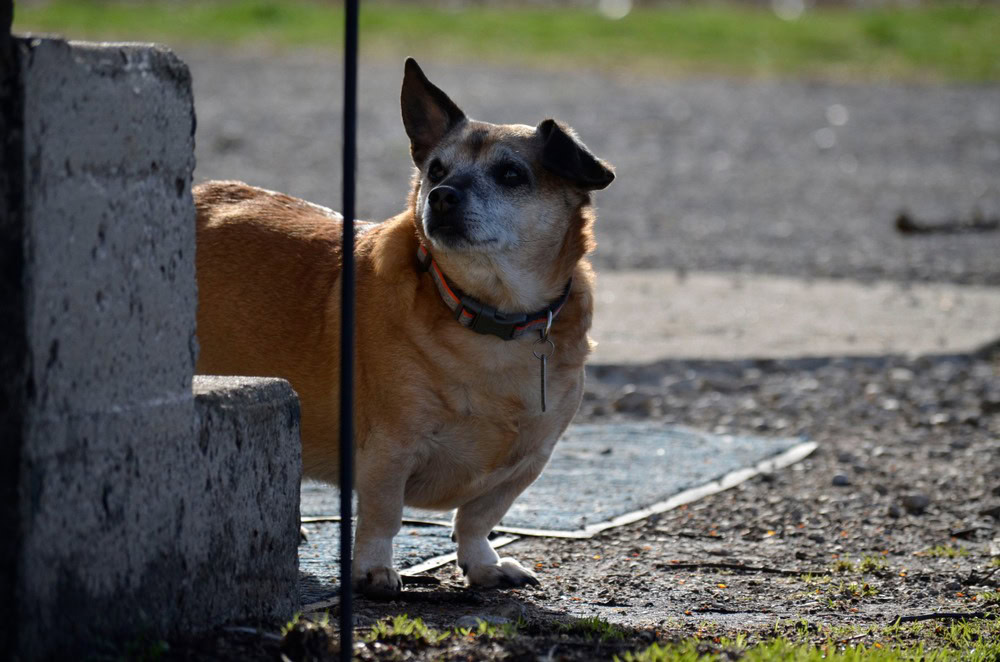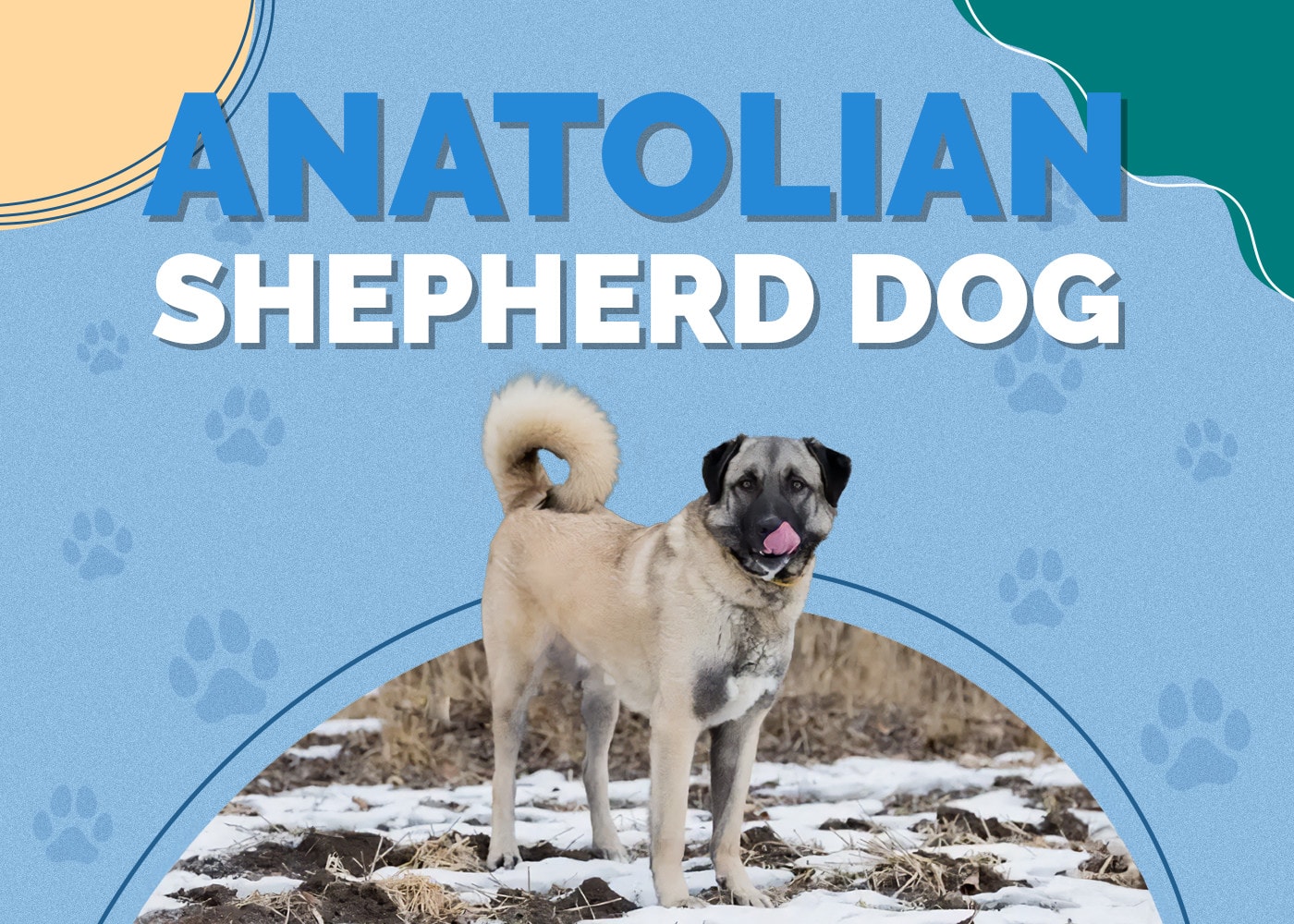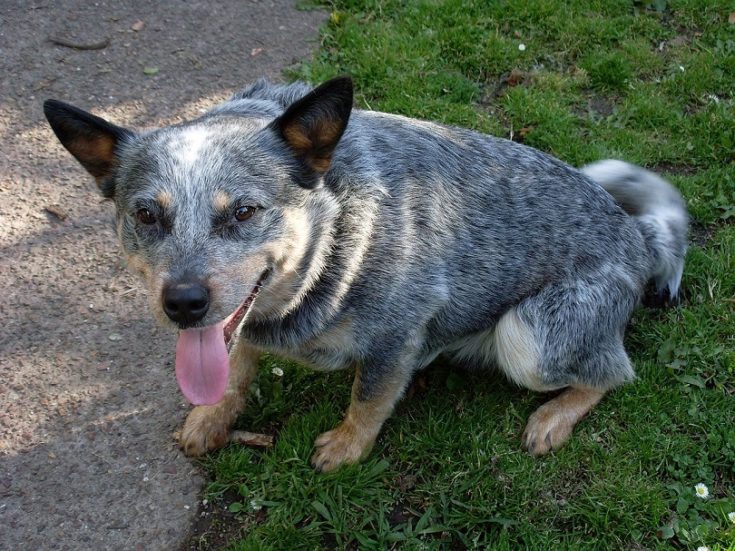Bullboxer Pit (Pitbull & Boxer Mix): Info, Pictures, Characteristics & Facts

Updated on
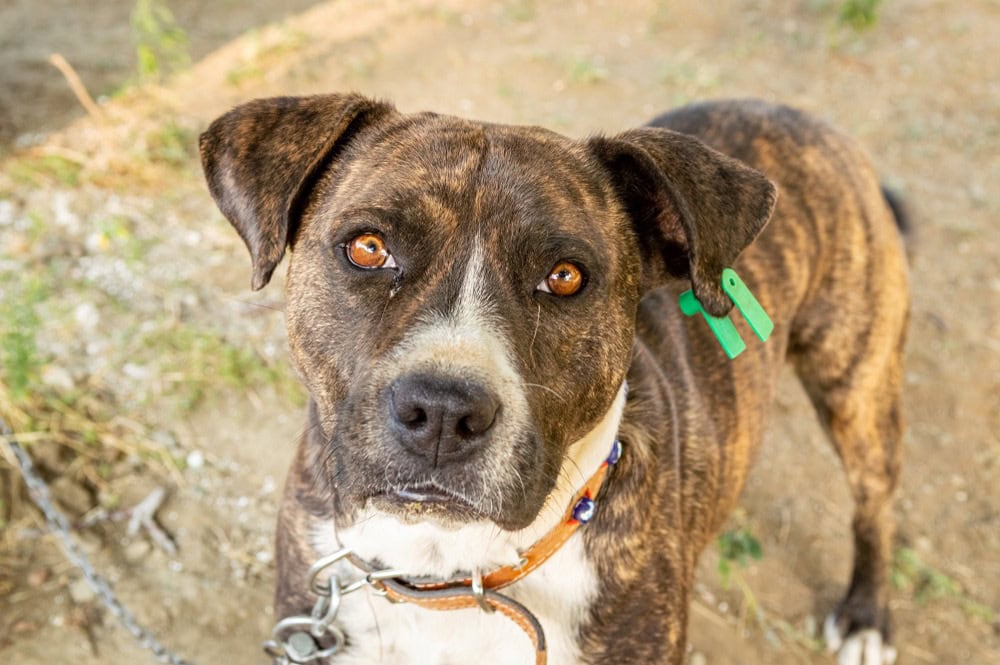
| Height: | 16–20 inches |
| Weight: | 50–80 pounds |
| Lifespan: | 10–14 years |
| Colors: | Brown, black, tan, yellow |
| Suitable for: | Very active families, experienced with dogs |
| Temperament: | Loyal & loving, intelligent, faithful, powerful, affectionate |
The Bullboxer Pit is a hybrid that’s a cross between the Boxer and the American Pit Bull Terrier breeds. The Boxer is a bright, energetic, affectionate, and loyal dog that falls into the Working Group, and the American Pit Bull Terrier is athletic, fearless, friendly, and eager to please. Like their parents, the Bullboxer Pit is a powerful dog that is very protective of their family and makes a good watchdog.
The Bullboxer Pit has a short coat that comes in almost any color you can imagine but is more commonly brown, tan, black, and yellow combined with white. They are medium-sized dogs that have a stocky and powerful frame.
Bullboxer Pit Puppies
Bullboxer Pits, like their parents, are very athletic and high-energy dogs that will need owners who can keep up with them. They are easy to train, thanks to their intelligence and eager-to-please nature, but you also might need to deal with stubbornness.
They are generally healthy, robust dogs and have an average lifespan for a dog their size. While they are friendly dogs, they are wary of strangers and any animals not from their household.
3 Little-Known Facts About the Bullboxer Pit
1. The Bullboxer Pit Is Prone to Becoming Overweight.
They love to eat and, therefore, might overeat, which makes them prone to becoming obese unless you’re careful with their diet.
2. The Bullboxer Pit Will Do Better With an Experienced Dog Owner.
This high-energy breed can be a challenge to train for a first-time owner. Combining this with their powerful physical strength, the Bullboxer Pit will require an owner who is experienced with dogs and up for a worthwhile challenge.
3. The Bullboxer Pit Is Commonly Used as Guard and Farm Dogs.
They are physically powerful dogs but also very devoted and protective, which makes them excellent working dogs.
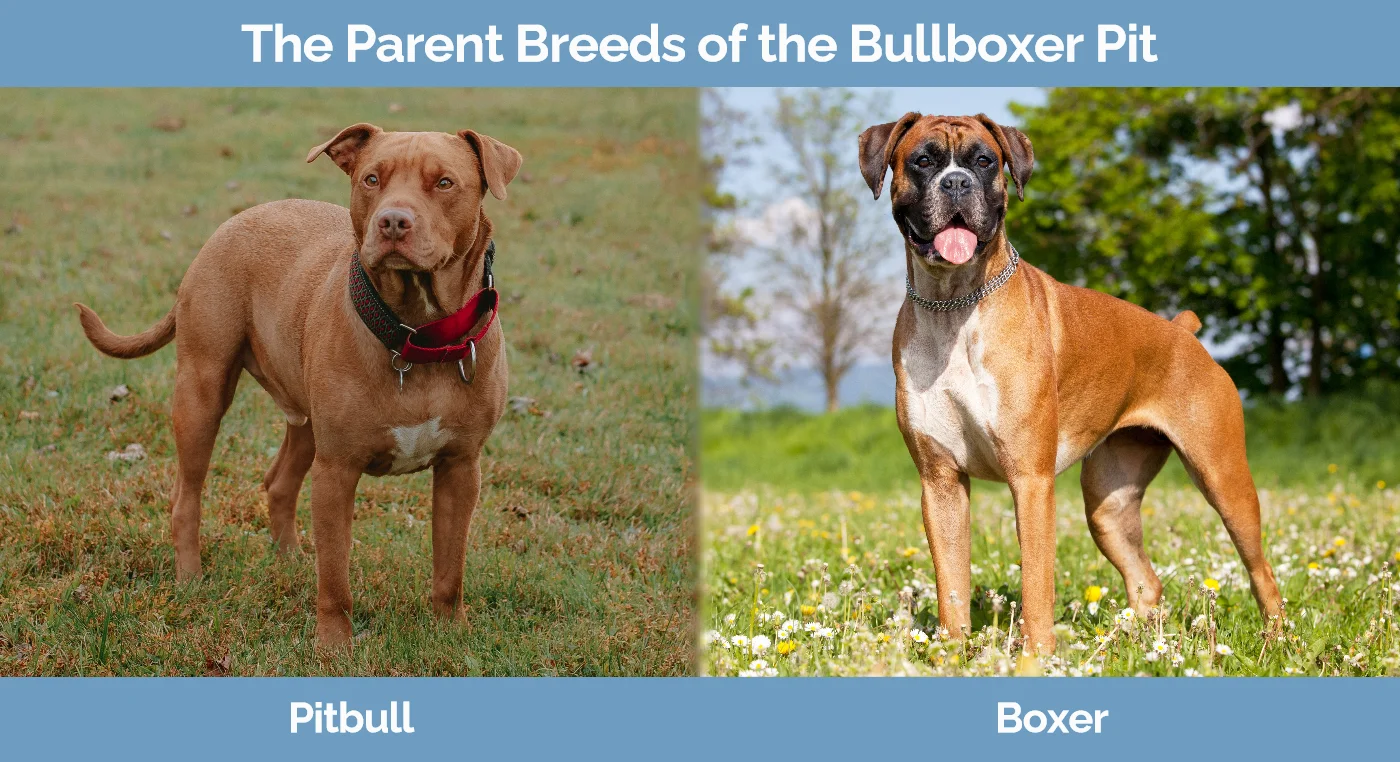
Temperament & Intelligence of the Bullboxer Pit🧠
The Bullboxer Pit is an intelligent, athletic, and friendly dog. They won’t do well in an apartment as they need space to move, run, and play, and they don’t like to be left alone for too long. They are faithful, protective, and sometimes stubborn.
Are These Dogs Good for Families?🏡
While Bullboxer Pits are excellent family dogs and love spending time with children, young children should be supervised while around these dogs. They make excellent watchdogs since they are very protective of their family, but they are also very friendly and loving with their family.
Does This Breed Get Along with Other Pets?🐶 😽
As long as the Bullboxer Pit is appropriately socialized as puppies, they will get along nicely with other pets. However, they have a high prey drive and might react to small animals running, which must be considered. It’s crucial that proper training and socialization occur at a young age and will need to be monitored throughout the dog’s life.
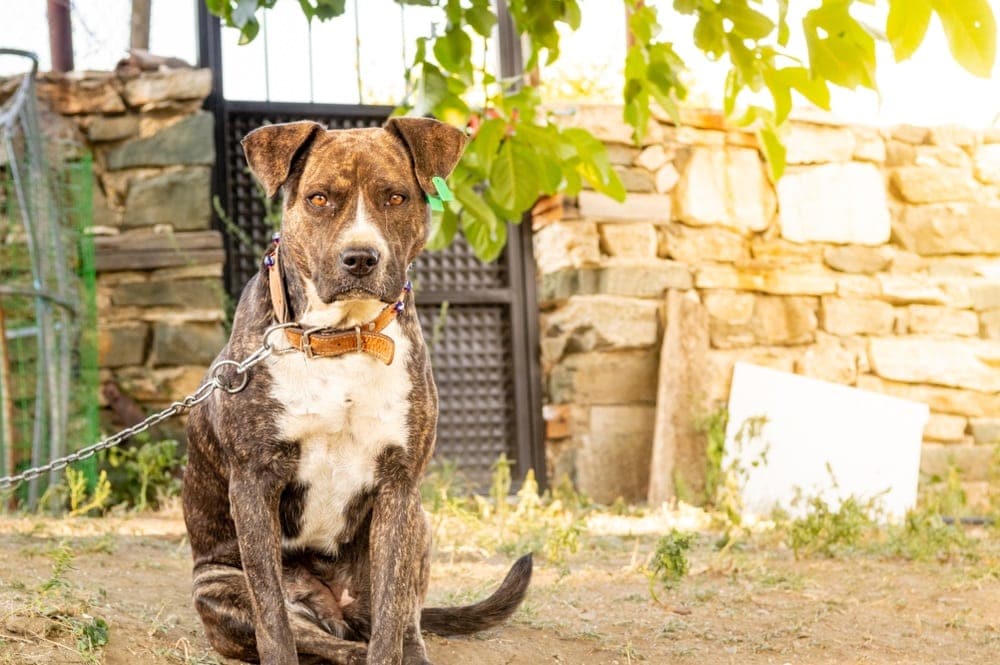
Things to Know When Owning a Bullboxer Pit:
Food & Diet Requirements🦴
As previously mentioned, the Bullboxer Pit is prone to overeating and is more likely to become overweight. They should be fed smaller meals 2 or 3 times a day, about 2 to 3 cups daily. Speak to your vet if you’re concerned about your dog’s weight and health and how much or how often you should feed your dog.
Exercise🐕
As already discussed, the Bullboxer Pit is a very athletic, high-energy dog that requires extensive exercise. A minimum of 2 hours per day of activities, including walking, jogging, or running, will help to expend some of this dog’s energy.
Using a variety of exercises such as swimming, chasing frisbees and balls, or even agility trials will help with the exercise requirements and prevent your dog from becoming bored. A bored dog can become a destructive dog.
Training🦮
Training and socialization must begin as early as possible for these strong and sometimes stubborn dogs. Like most canines, they respond best to patience, consistency, and positive reinforcement. Reward-based training, combined with lots of love and praise, will ensure the best outcome for your puppy.
Grooming ✂️
Grooming is easy for these dogs, thanks to their short coat of fur. However, they tend to shed, and weekly brushing will help. They should only be given a bath with dog shampoo when necessary (no more than once a month).
The Bullboxer Pit has floppy ears that should be regularly cleaned since they might contain excess oils and wax. Start trimming your dog’s nails and brushing their teeth regularly while they are puppies, and it will become a regular part of their routine.
Health and Conditions ❤️
Serious Conditions:
The Boxer is prone to cardiomyopathy, hip dysplasia, heart disease, and sometimes spinal cord disease and brain tumors. The American Pit Bull Terrier might also experience spinal cord disease and hip dysplasia, as well as kneecap dislocation, congenital heart defects, congenital eye defects, and particularly a predisposition to cataracts.
Your Bullboxer Pit is a hybrid and not nearly as likely to experience these health issues, but having your vet check for the possibility is always a good idea. Your vet will check your dog’s hips, spine, and elbows, and they will run heart tests as part of a physical exam.
Minor Conditions:
The Boxer might suffer from colitis, twisted spleen, corneal disease, and hypothyroidism. The American Pit Bull Terrier is also prone to hypothyroidism and a variety of skin problems such as mange and skin allergies.
Your vet will check your dog’s thyroid and eyes and conduct skin and allergy tests.
Male vs. Female
In most dogs, one of the differences between males and females is in size and weight. The female Bullboxer Pit might range from 16 to 19 inches in height, whereas the male might be 17 to 20 inches. The female weighs 50 to 70 pounds, and the male weighs 60 to 80 pounds.
If you aren’t planning on using your dog for breeding, surgery should be considered. Having your female dog spayed is a more complicated surgery than neutering the male dog and, therefore, is more expensive and has a longer recovery time. The advantage of spaying or neutering your dog is that it can make them less aggressive and excitable and prevent future health problems.
Another possible difference between males and females is their temperament and behavior. There are debates on whether or not female dogs are less aggressive and more affectionate than males. However, how your dog was socialized and trained as a puppy will be the primary indicator of how they will behave as an adult.
Final Thoughts
The Bullboxer Pit is a combination of friendly, fearless, energetic, and cuddly. Combining two powerful and devoted dogs like the Boxer and the American Pit Bull Terrier creates a perfect meld of the two breeds, bringing out some of their best qualities into one dog.
Starting your search for a Bullboxer Pit puppy can begin with speaking to breeders of Pit Bulls and Boxers. You might also talk to rescue groups or local and national dog club members and attend dog shows. Posting about your interest in finding one of these puppies on social media will be a great way to ensure a much larger audience sees your message.
While the Bullboxer Pit is not a pet for beginners, the time and effort spent training them will give you an amazing addition to your family.
Related Read:
- Boxmas (Boxer Mastiff Mix): Pictures, Care Guide, Temperament, & Traits
- 6 Best Muzzles for Pit Bulls – Reviews & Top Picks
Featured Image Credit: Ipek Morel, Shutterstock





